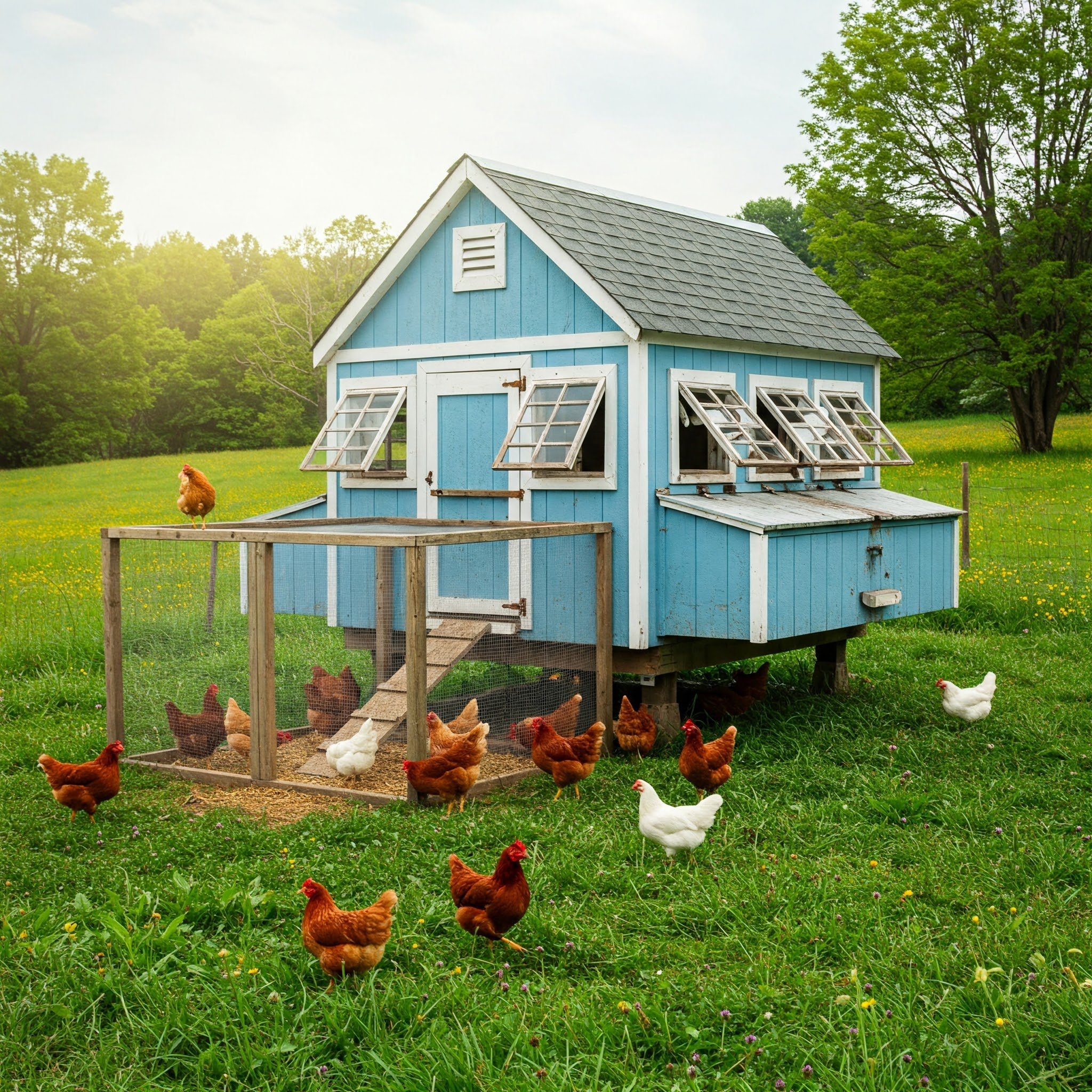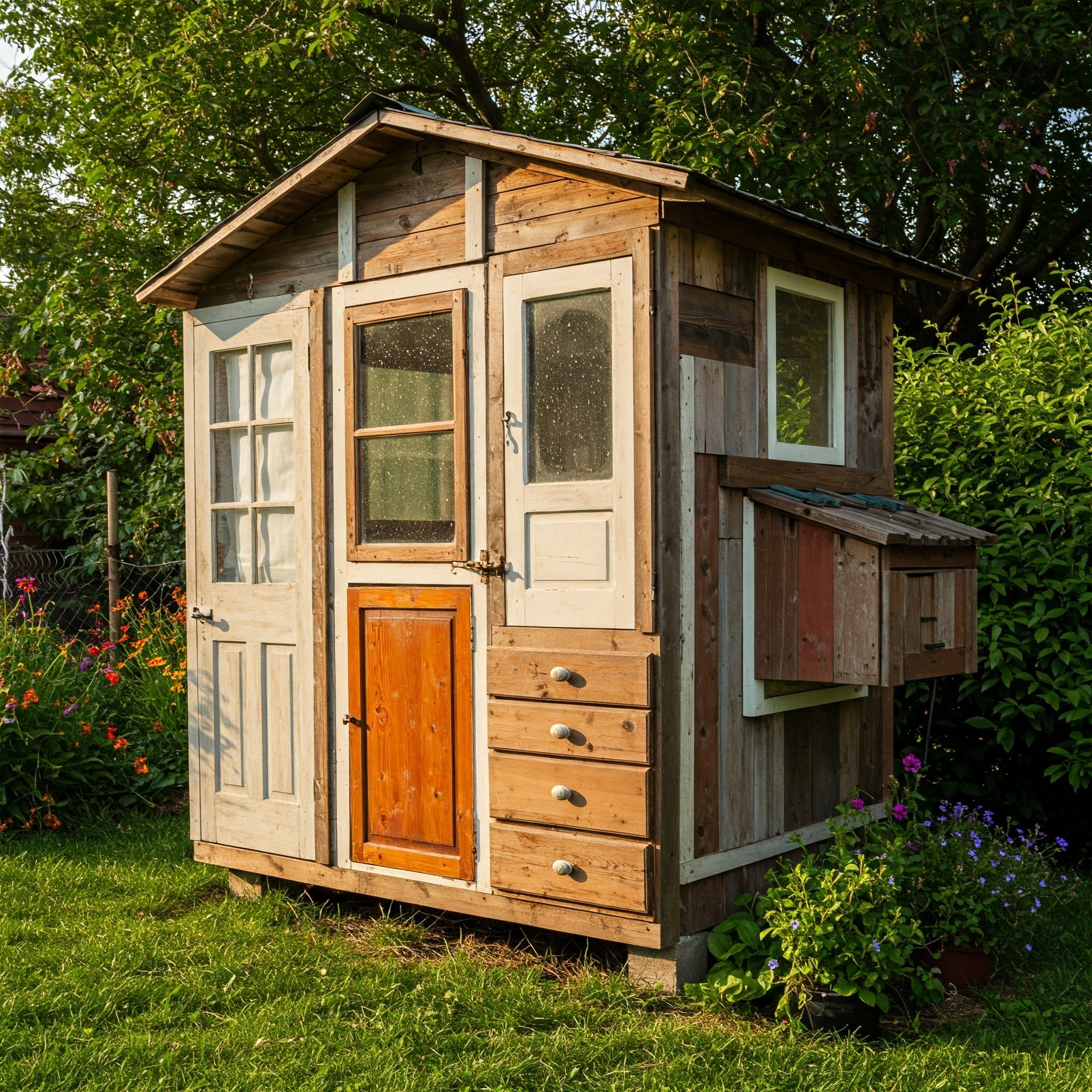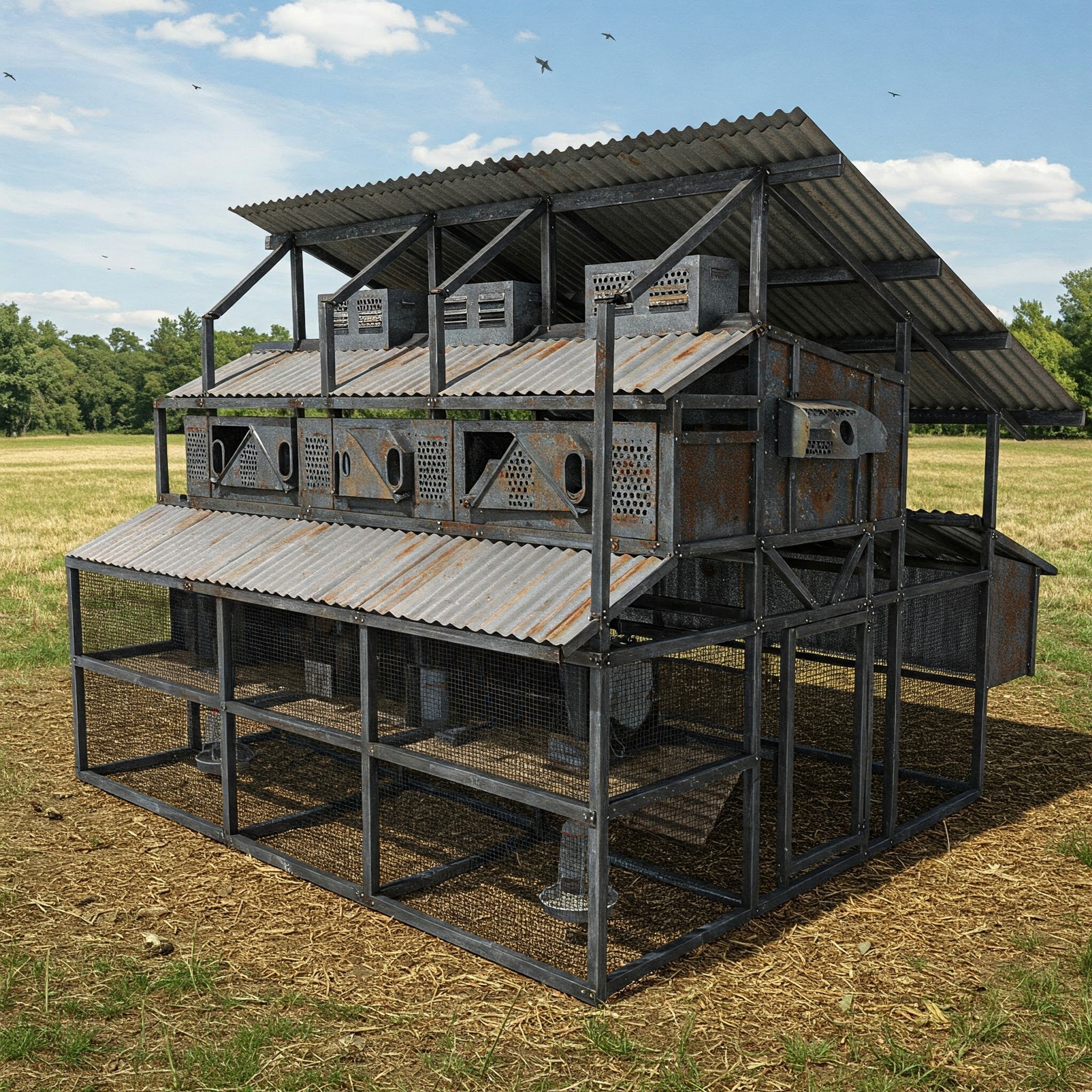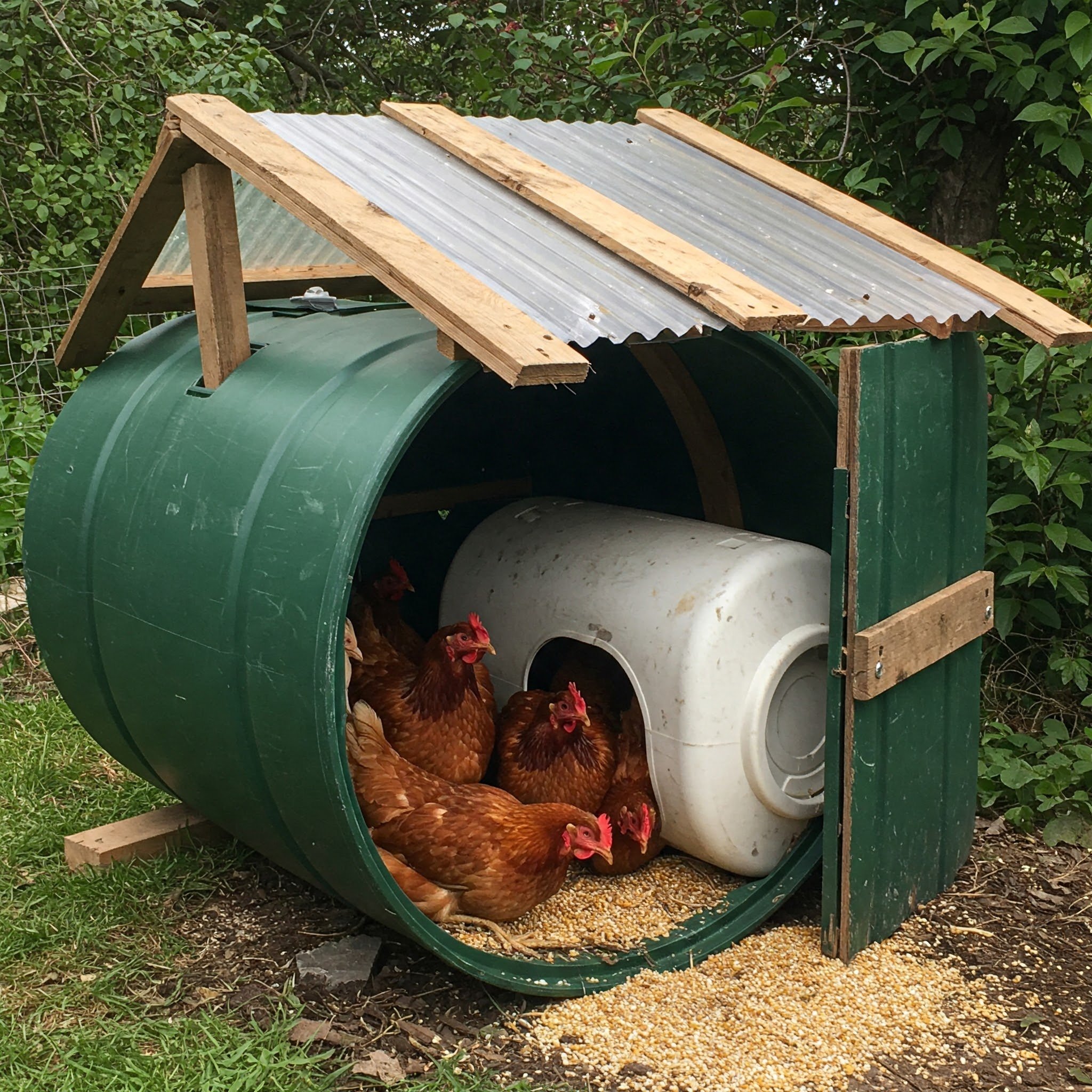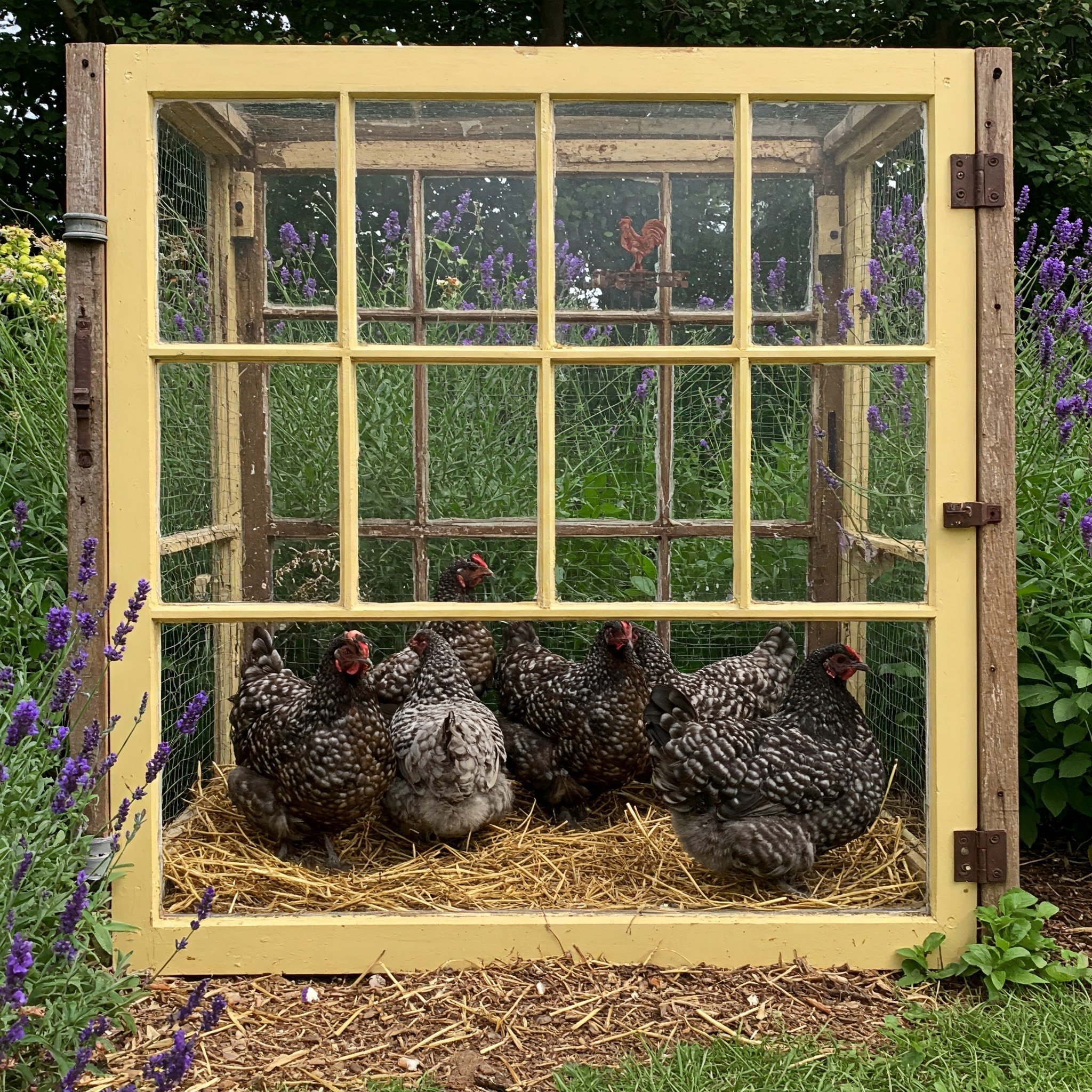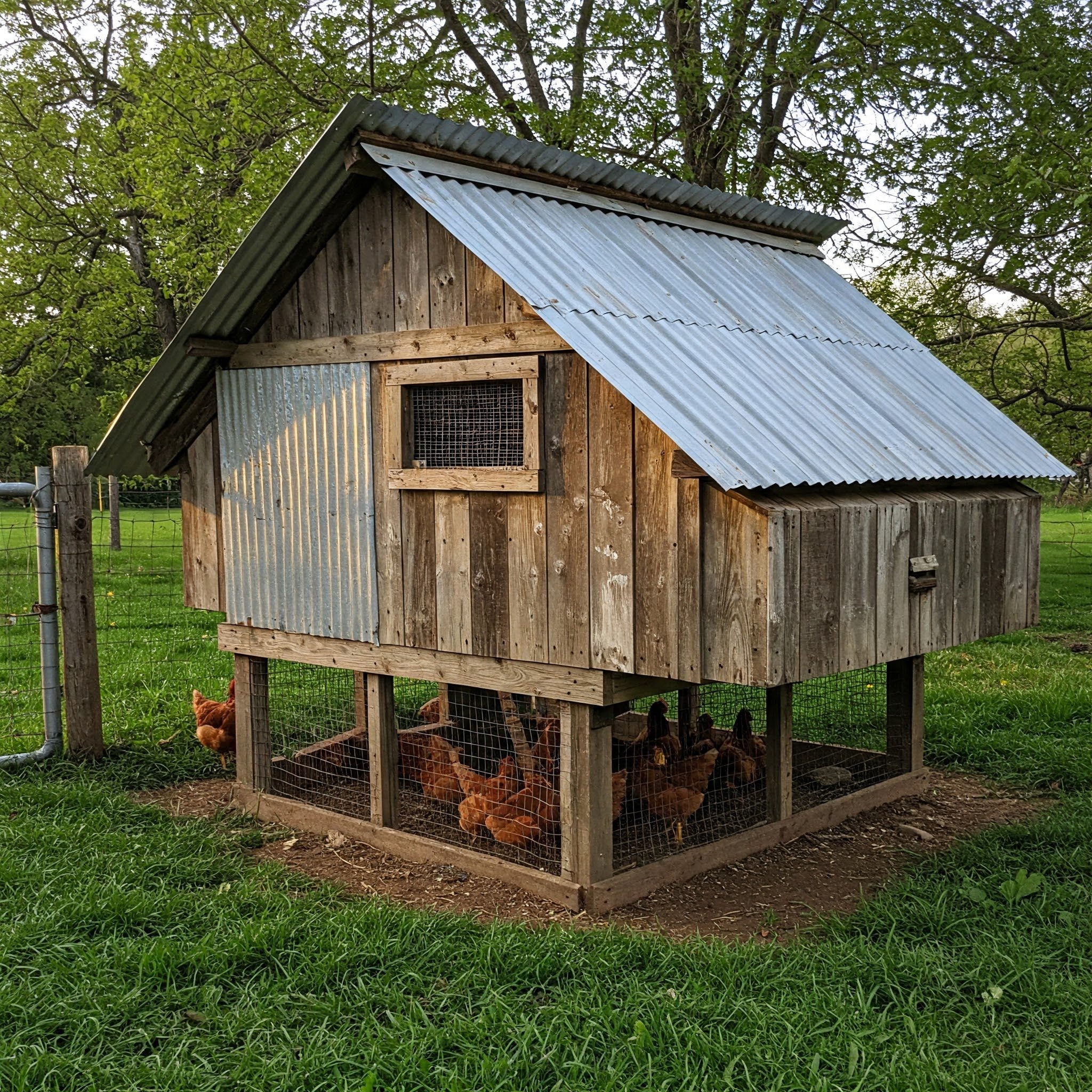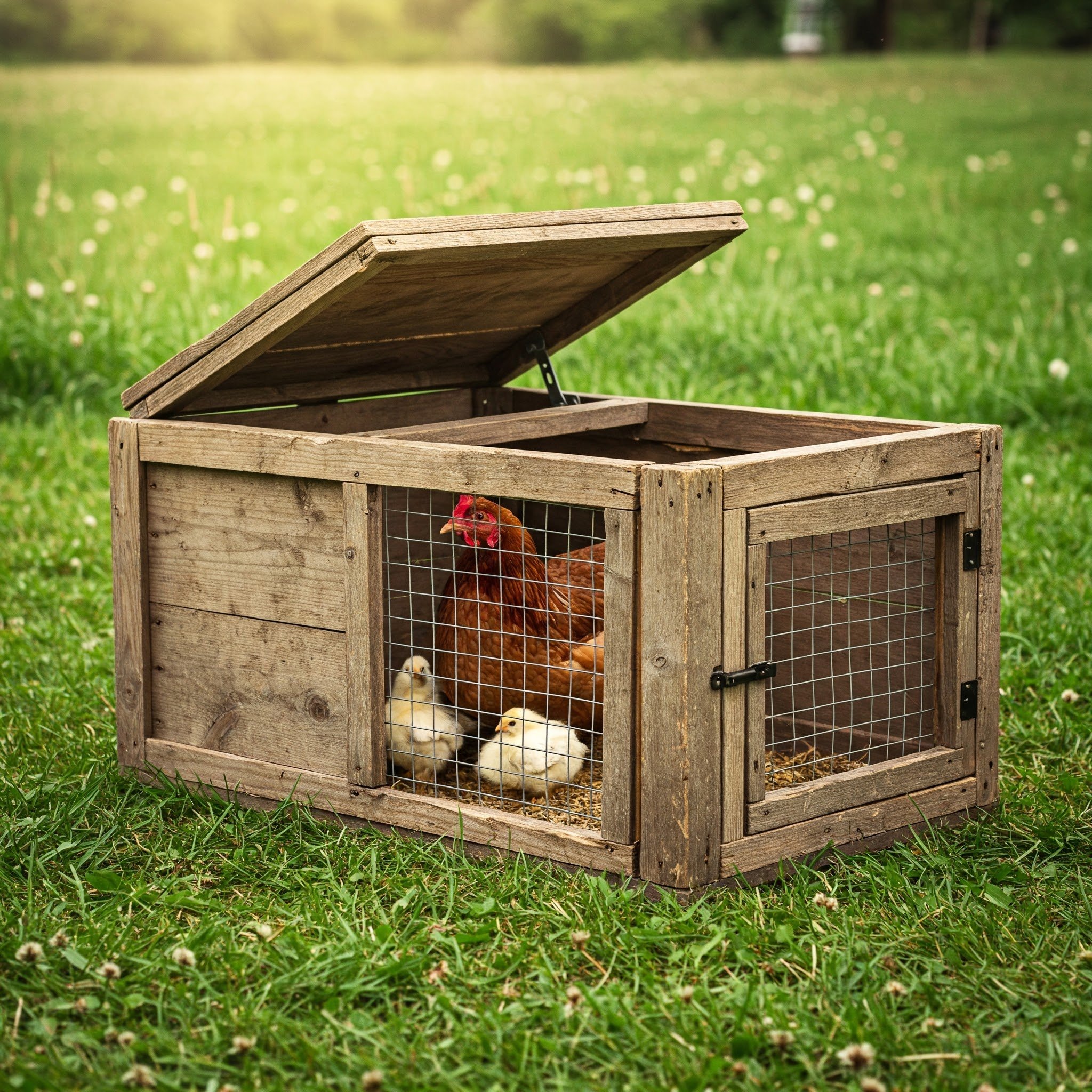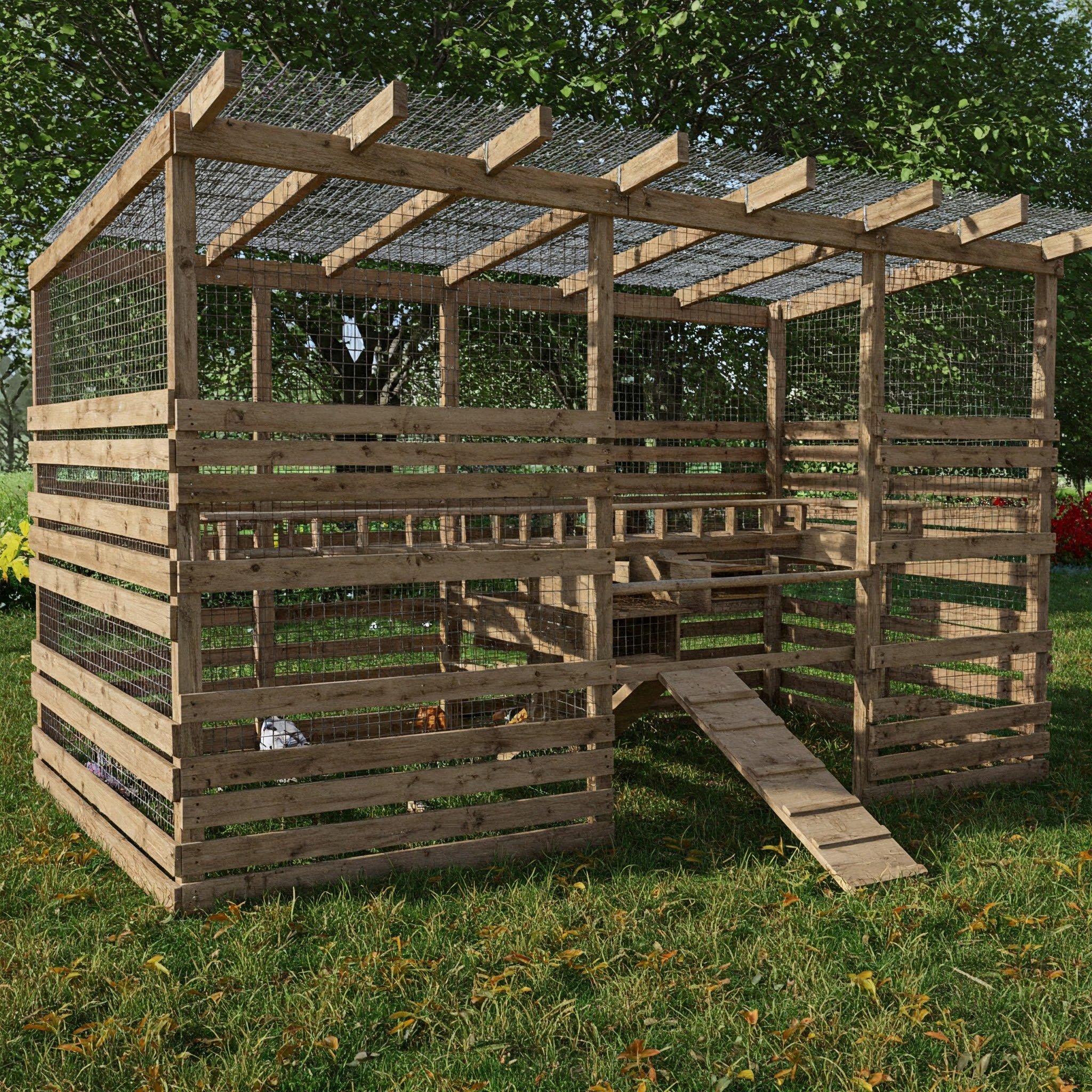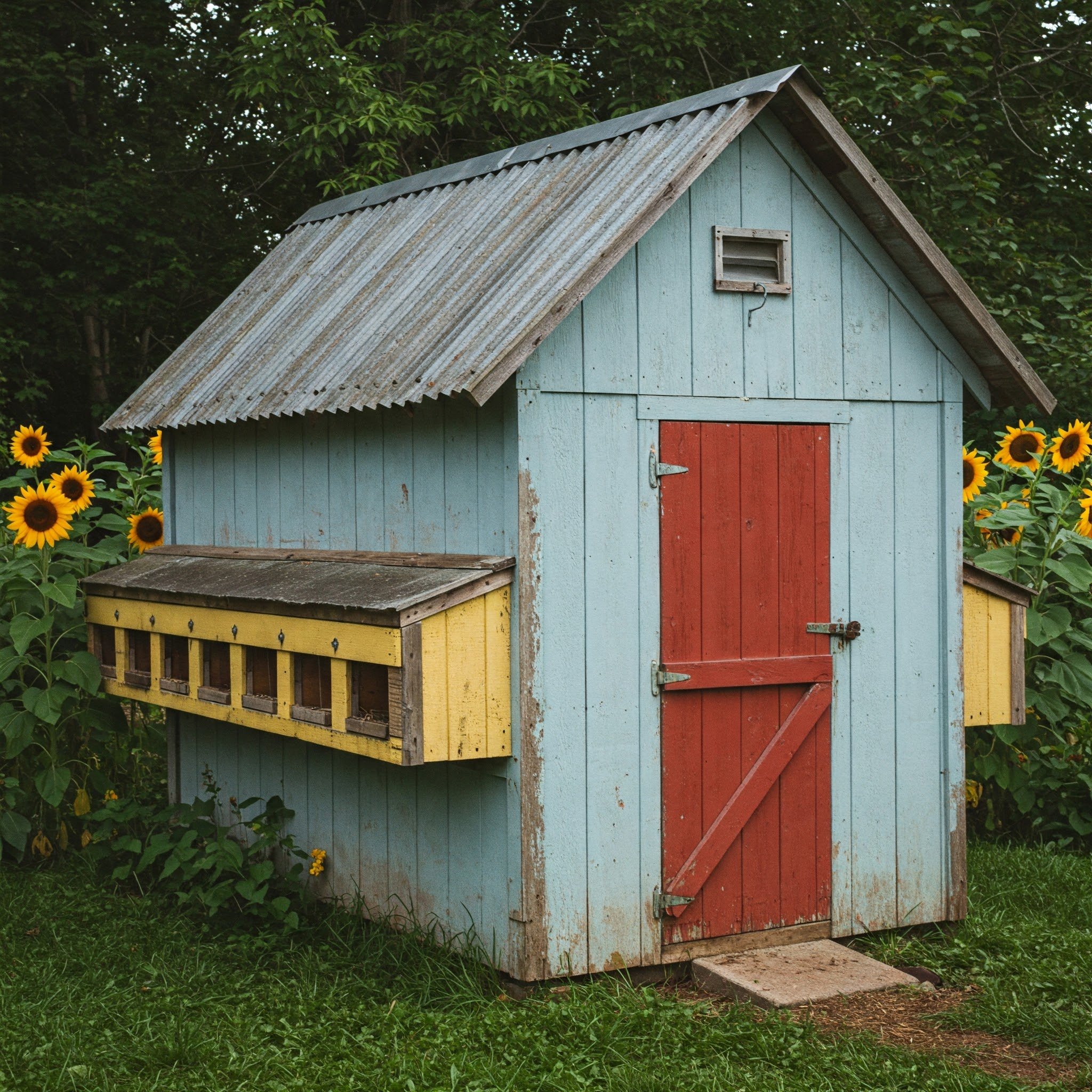15 Cheap Chicken Coop Ideas for a Budget Yard
Discover creative and cost-effective ways to design a cozy, durable chicken coop on a shoestring budget. From salvaged wood pallets to upcycled furniture pieces, explore 15 thrifty build ideas that help you nurture happy hens without emptying your wallet.
Welcome to the world of budget-friendly chicken coop ideas, where imagination meets practicality. If you’ve been dreaming about gathering fresh eggs from your own backyard but worry about the cost, this article will make you breathe a sigh of relief. Building a chicken coop doesn’t have to drain your finances. With a little elbow grease and a healthy dose of creativity, you can give your feathered friends a safe and comfy home at a fraction of the price. Whether you’re a DIY newbie or an old hand at repurposing junk, these 15 wallet-friendly coop concepts will show you that affordability and style can indeed walk hand in hand. So, grab your tool belt and let’s explore some thrifty possibilities for housing your beloved backyard flock!
1. Repurpose Wooden Pallets for a Sturdy Base
Have you ever noticed how wooden pallets seem to be everywhere—behind grocery stores, in warehouses, or lying around after big deliveries? These sturdy, rectangular frames can become the perfect backbone for your budget-friendly chicken coop. Pallets are built tough enough to handle heavy cargo, so they’re more than capable of enduring the daily hustle and bustle of your feathered roommates. By arranging and securing multiple pallets, you create walls and a floor that hold up against wind, rain, and curious predators. A quick coat of waterproof sealant helps them withstand the elements while keeping chickens comfy inside. If you’re feeling extra fancy, add simple siding like plywood or leftover wood planks to dress things up. The result? A solid, rustic-style coop that won’t cost you an arm and a leg.
2. Upcycled Furniture Coops
Don’t toss that rickety old armoire or dresser just yet—upcycling furniture can be a real game-changer for your flock’s humble abode. Imagine transforming a weathered wardrobe into a stylish mini chicken mansion, complete with built-in compartments for feed and nesting boxes. Not only does this approach save you money, but it also gives forgotten household items a brand-new lease on life. To get started, remove the doors and shelves that could pose a hazard, then install roosting bars where clothes hangers once dangled. Next, focus on ventilation: drill or cut out small openings to keep fresh air circulating. Finally, apply a weatherproof coating or exterior paint, protecting the coop from moisture and temperature swings. This method adds a dash of charm and personality that your feathered buddies—and your wallet—will appreciate.
3. Scrap Metal Frames for Durability
If you’ve got leftover metal bars, poles, or sheets that are itching for a second chance, a scrap metal frame might be your golden ticket to a practically indestructible coop. Steel, aluminum, or even iron rods can lend the structure significant durability while also resisting wear and tear. Start by mapping out a simple rectangular frame that can house your chickens comfortably. Once you bolt or weld the main pieces together, fill in the gaps with chicken wire, hardware cloth, or reclaimed wood panels for a snug enclosure. Feel free to mix materials—metal on the outside and wood on the inside for a warmer, cozier vibe. Although this may sound heavy-duty, you’ll be surprised how your repurposed metal structure can keep your flock safe while preserving your budget.
4. Plastic Barrel Haven
Large plastic barrels might not scream “chicken coop” at first glance, but they’re actually pretty awesome for a thrifty setup. Think of each barrel as a ready-made mini shelter. All you have to do is cut a handy opening for your hens to slip in and out, and maybe add a second access door for cleaning. A sturdy wooden base or stand prevents the barrels from rolling around, which keeps your chickens from going on impromptu amusement park rides! You can link multiple barrels together if you have a bigger flock, creating a playful little “barrel village.” Don’t forget to drill a few ventilation holes near the top for airflow. With a splash of paint or a bit of decorative flair, these humble barrels quickly become a cozy, low-cost abode.
5. Old Window Chicken Haven
If you love the look of old rustic windows and you’ve got some collecting dust in your garage, why not repurpose them into a charming chicken coop? Using windows as part of the structure invites tons of natural light inside—like a sunroom for your feathered friends. Picture your chickens pecking around in a well-lit space, happily soaking up rays through glass panes that used to frame lovely outdoor views. To build, create a simple wooden frame that can hold these windows in place. Secure each window firmly, and be sure to fill in any gaps to keep predators at bay. For ventilation, pop in small vents or slightly open windows with mesh screens. With a little creativity, you’ll have a sun-kissed sanctuary that elevates your backyard’s style without blowing your budget.
6. Corrugated Roofing on a Budget
Roofing may sound like the most expensive part of building a coop, but you can save big by reusing corrugated metal or plastic sheets. These wavy panels often get discarded after home improvement projects or found at salvage yards. They’re lightweight yet durable, handling harsh elements like rain and snow with ease. Just lay them on top of a sturdy frame—pallet wood, scrap timber, or metal rods work well—and secure them with appropriate fasteners. Add a layer of insulation underneath if you live in an area with extreme weather swings. This method not only protects your hens from the elements, but also adds a cool, rustic-industrial vibe to your coop. No one needs to know you snagged those panels at a bargain price, except maybe your grateful chickens!
7. Wooden Crate Coops
Wooden crates, often used to haul produce or other goods, can be a total lifesaver when you’re on a tight chicken coop budget. If you manage to gather several sturdy crates, you basically have the walls of your coop ready to go. First, check for any loose boards or exposed nails—safety comes first! Then stack and attach the crates in whatever layout best fits your yard. Secure them horizontally or vertically with nails or screws, filling gaps with smaller scraps of wood. Attach a corrugated roof or some leftover plywood to top it off, keeping everything sheltered. The crate design naturally fosters little compartments, which your chickens can use for nesting or roosting corners. With a quick paint job and a bit of weatherproof sealant, these crates can create a cozy, farmhouse-style haven.
8. Bamboo-Frame Chicken Palace
Bamboo might not be the first material that comes to mind, but it’s surprisingly strong and flexible—an ideal option if you’re hunting for something unique and eco-friendly. Think of bamboo as nature’s scaffolding: it grows quickly, is lightweight, and can be used in countless ways. Begin by gathering your bamboo poles and cutting them to the desired lengths. Construct a framework using rope or zip ties to secure the poles where they intersect, then attach chicken wire or hardware cloth to form the walls. Don’t forget to fortify corners and potential weak spots with additional bamboo supports. A simple roofing material—like a thatched or corrugated cover—shields the interior from rain. This airy, minimalist design can stand up to the elements while giving your coop a refreshing, tropical twist.
9. Greenhouse-Inspired Coop
Ever think of blending a greenhouse and chicken coop into one nifty space? By repurposing old greenhouse panels or clear plastic sheets, you can craft an enclosure that’s brimming with natural sunlight and warmth. This setup is like giving your chickens their own spa retreat—bright and cozy, even on chillier days. To build one, start with a basic frame using wood or metal rods, then attach the clear panels securely. Make sure to include windows or vents that let in fresh air and release excess heat. You can strategically place nesting boxes in sunnier corners, encouraging your hens to lay eggs in comfort. Just be mindful of temperature extremes; if it gets too steamy, set up additional ventilation. Overall, your flock will feel like they’ve stepped into a mini resort.
10. Pallet Fencing and Hardware Cloth
If you love the idea of using pallets but want a more open-air design, combine pallet fencing with hardware cloth to create breezy yet secure walls. By standing pallets on end and anchoring them firmly, you form a sturdy perimeter without spending a fortune. Attach hardware cloth along the inside to keep predators from slipping through any wide gaps. It’s important to cover every potential entry point, including the top, if you’re worried about aerial threats. You can cut door-sized openings in the pallets for easy access, then reinforce them with a simple wooden frame for a gate. This style not only saves money but also embraces a rustic-chic vibe. Plus, hardware cloth allows sunlight and fresh air to flow, ensuring your chickens remain comfortable and healthy year-round.
11. Hoop Coop with PVC Pipes
The hoop coop is a classic budget solution that requires minimal effort and materials. Picture bending flexible PVC pipes into an arc and anchoring them on both sides to create a tunnel-like frame. Drape some sturdy chicken wire or welded wire mesh over the arcs, then add a tarp or sheet of corrugated material to shield half or more of the coop from direct rain or scorching sun. This design gives your birds a spacious, airy enclosure that’s easy to access for feeding and cleaning. With a few simple modifications, you can incorporate nesting boxes at one end or build a small wooden enclosure for roosting. Lightweight yet durable, the hoop coop can be relocated if you need to give your grass a break or shuffle your flock around.
12. Converted Old Shed
Have an old shed that’s turned into a dusty storage tomb for random tools and spider webs? Give it a second life as a chicken coop. Converting a shed is often simpler than starting from scratch, because you’ve already got the walls, roof, and foundation in place. First, clear out any clutter—nobody wants a pitchfork falling on them mid-snooze! Next, check for structural soundness, patching holes and securing any loose boards. Add roosting bars at various heights, and situate nesting boxes along the sides where you can conveniently collect eggs. It’s essential to install ventilation vents or windows so your hens don’t feel stuffy. Finally, inspect the door and reinforce it if needed to keep out curious predators. Voilà! Your old shed just morphed into a cozy, no-fuss chicken villa.
13. Straw Bale Chicken Retreat
Straw bales might sound like a farmhouse cliché, but they can be surprisingly effective at creating insulated walls for your coop. When stacked securely, straw bales offer thick, warm barriers against wind and cold, perfect for cooler climates. Construct a simple wooden frame to hold the bales in place, and consider adding wooden or pallet corners for extra stability. The bales themselves can function as the walls, and a sturdy roof—made from salvaged plywood or corrugated panels—keeps everything dry inside. You’ll want to line the interior with chicken wire to prevent the hens from pecking at the straw and scattering it everywhere. Keep in mind, straw bales are biodegradable, so they’ll eventually need to be replaced. Still, for a cheap yet cozy setup, straw bales provide an excellent homey feel.
14. Mobile Chicken Tractor
If you like the idea of letting your chickens peck around fresh grass daily without building multiple coops, a mobile chicken tractor might be your dream come true. This rolling enclosure is typically built with lightweight materials—think PVC piping, slender wood beams, or even aluminum so it can be easily dragged to new spots in your yard. Once parked, your hens can feast on bugs and weeds while fertilizing the soil in a controlled area. The tractor usually includes a small covered space for roosting and nesting, along with an open run protected by wire mesh. You can add wheels or simple skids to make moving it a breeze. Over time, your lawn will enjoy a fertilizing boost, and your chickens get a daily change of scenery without the risk of predators.
15. Painted & Decorated Coops
Who says chicken coops have to look drab? With a little paint and decoration, you can turn your thrifty creation into a backyard masterpiece. Whether you used pallets, crates, or an old shed, a fresh coat of outdoor-friendly paint not only seals and preserves the wood but also gives it a pop of personality. Maybe you’ll opt for a whimsical barn-red tone or a pastel cottage-style vibe—whatever suits your fancy. Add finishing touches like cute signs (“Fresh Eggs Here!”), little window boxes for flowers, or even stenciled silhouettes of chickens along the siding. These fun elements transform a functional shelter into a conversation piece, letting your creativity shine. Not to mention, a well-decorated coop can bring a cheerful spark to your garden and make tending your flock a total delight.
Conclusion
When it comes to chicken coops, budget-friendly doesn’t have to mean boring or flimsy. By using your imagination and exploring unconventional materials—like repurposed furniture, pallets, straw bales, or plastic barrels—you can construct a secure, stylish home for your hens without breaking the bank. Each of the 15 ideas we’ve explored blends practicality with personality, allowing you to customize a coop that works for both you and your flock. Plus, there’s something deeply satisfying about turning old, forgotten items into a safe haven for your beloved birds. Whether you aim for a rustic farm aesthetic or a quirky, colorful design, these thrifty setups prove that with a little resourcefulness and a dash of elbow grease, you can keep costs low and your chickens comfortable.
Read next: 15 Creative Chicken Coop Ideas for Your Backyard
Frequently Asked Questions
How many chickens fit into these coops?
The capacity depends on the size of your DIY structure. Generally, each chicken needs at least three to four square feet of coop space. Measure your setup and plan accordingly.Are these coop designs predator-proof?
They can be if you reinforce vulnerable spots. Use hardware cloth instead of flimsy chicken wire, secure doors with latches, and check for gaps where critters could sneak in.Do I need insulation in mild climates?
If your area experiences moderate temperatures, heavy insulation may not be crucial. However, adding simple draft protection and weatherproof materials helps keep your flock comfortable year-round.How often should I clean my budget-friendly coop?
Aim for at least once a week to remove droppings, old bedding, and leftover feed. Regular maintenance prevents odors, disease, and insect infestations that can harm your flock.What’s the best way to keep coops ventilated?
Incorporate vents, windows, or mesh openings at the top of the structure to circulate fresh air. Proper ventilation helps regulate temperature and prevents moisture buildup inside the coop.
